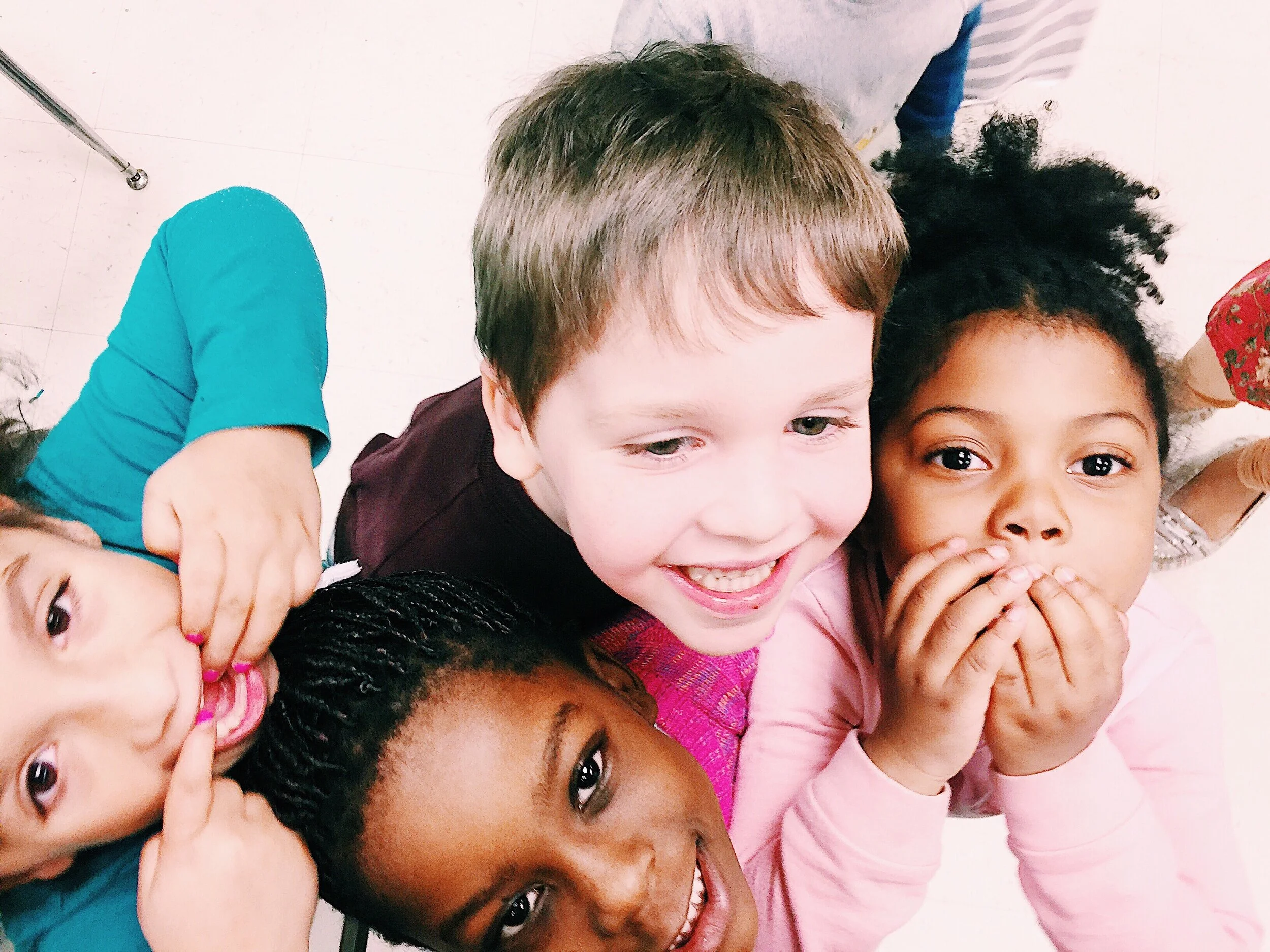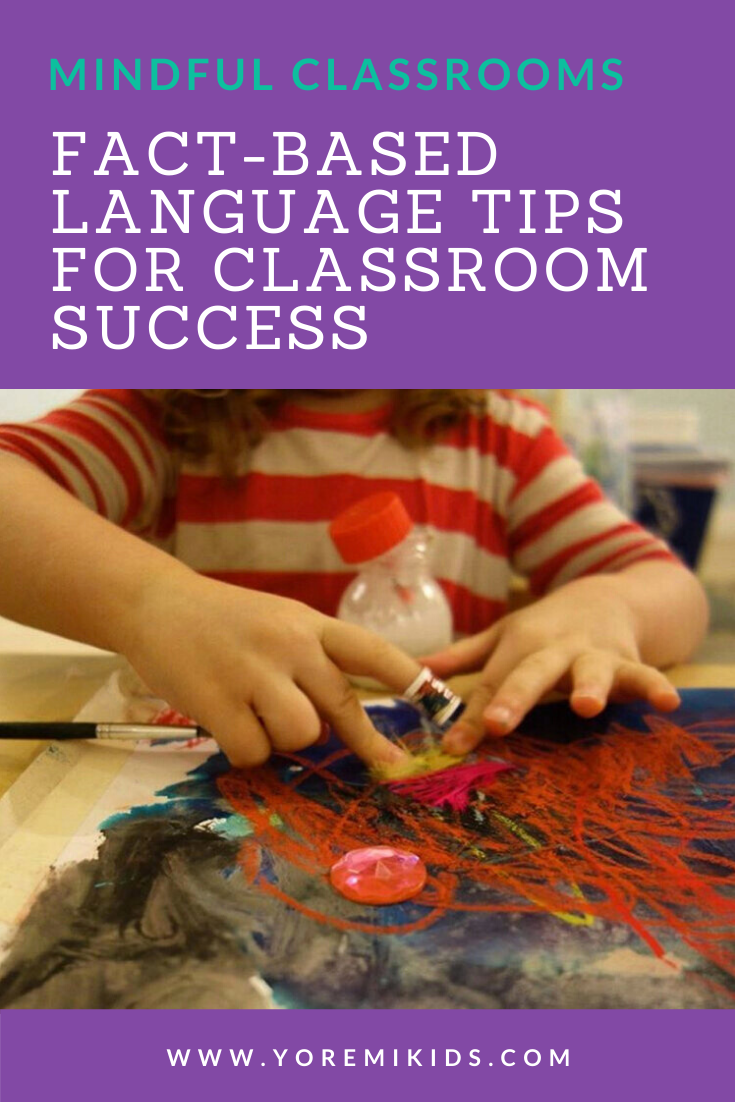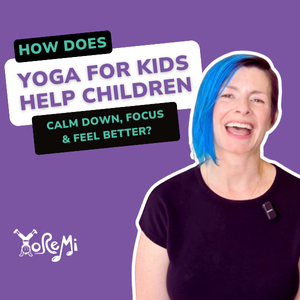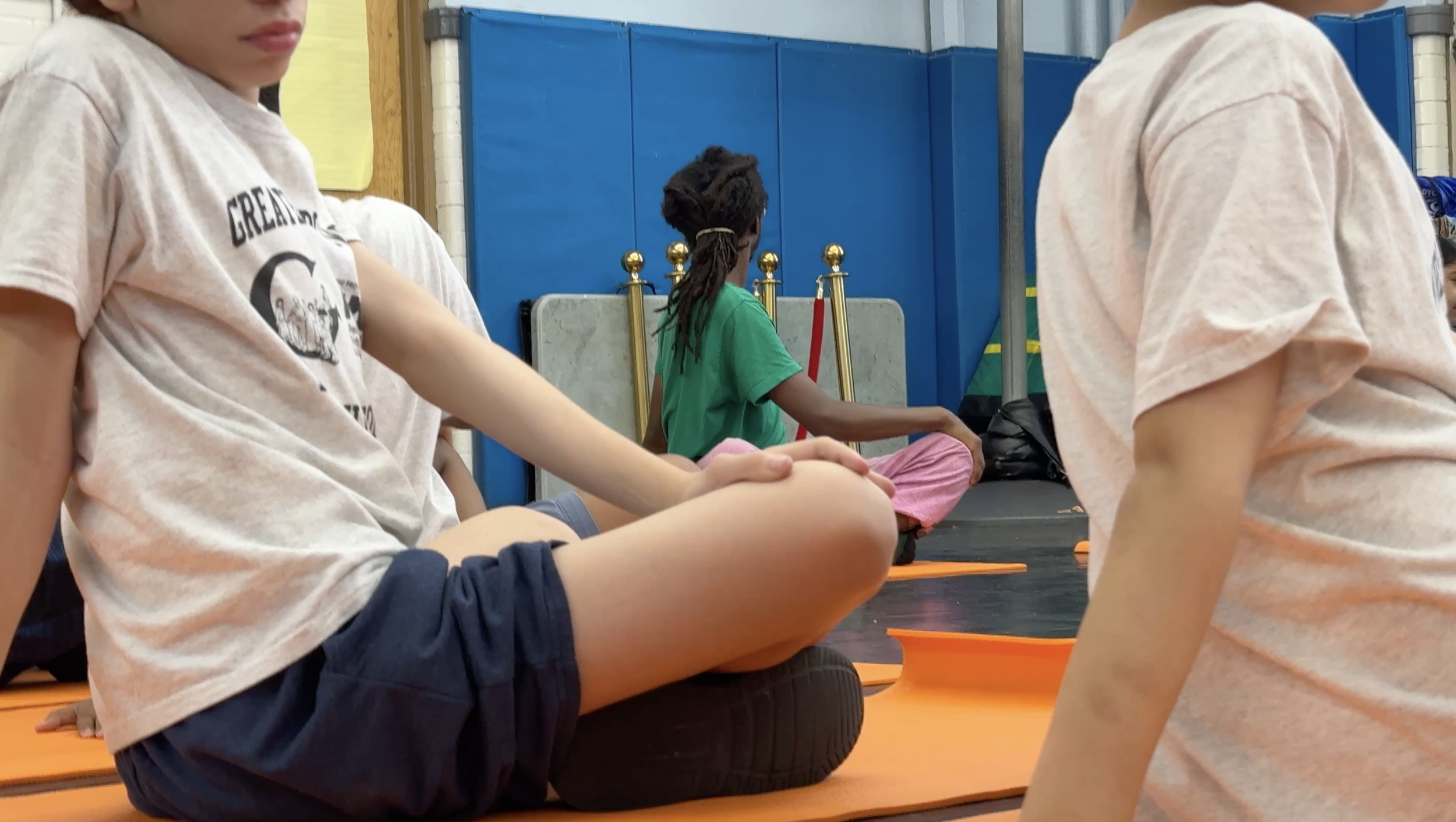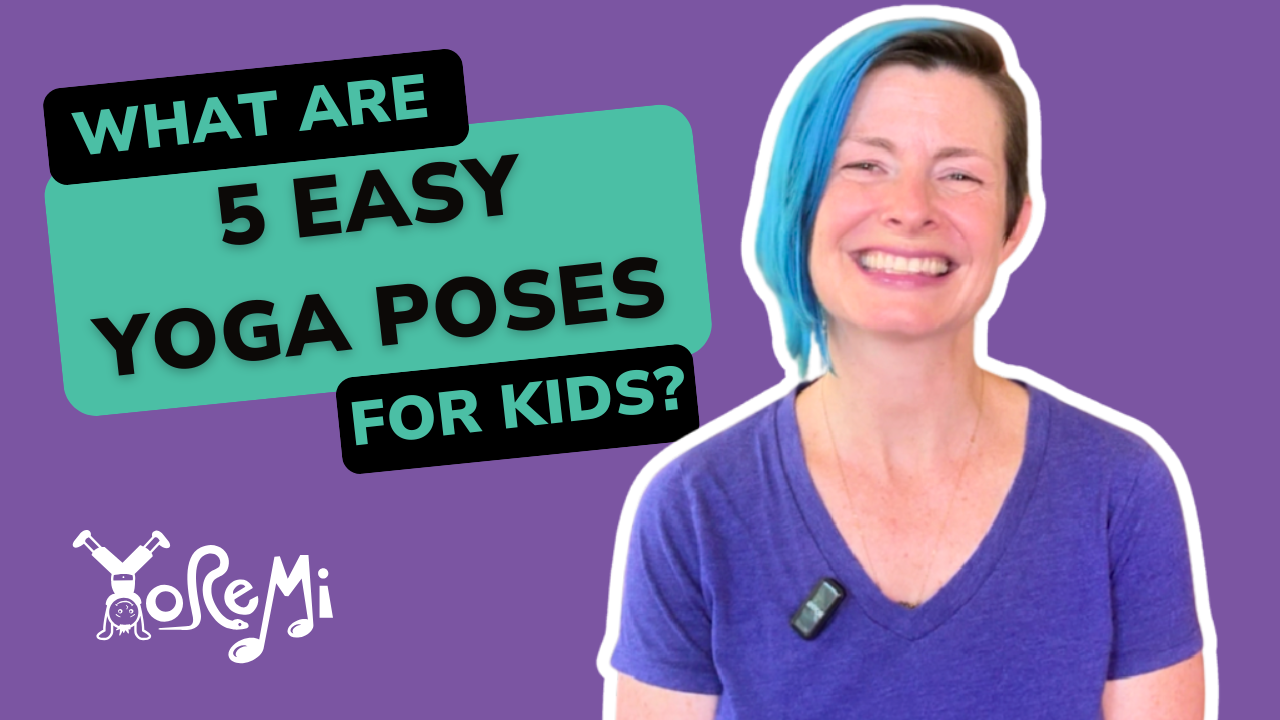How to Practice Non-Judgement in the Classroom Using Fact-Based Observations
There are so many great activities and tools we can use everyday to share mindfulness with children. But we all know kids learn much more from what we do rather than what we say. Mindfulness can only become an integrated part of classroom or school culture when it is modeled consistently by teachers and administrators.
While using mindful language for educators is imperative for classroom communication, using fact-based observations to create an environment where self-esteem and self-assessment are encouraged is equally important.
Effective educators model and encourage self-awareness through our skillful use of fact-based observations. This style of communication is not only useful in the classroom, it may revolutionize your relationships across all areas of your life.
What is a Fact-Based Observation?
A fact-based observation is an acknowledgment or informative feedback without judgement. It differs from praise and rewards, which are inherently judgmental and are often used by adults to manipulate a child’s behavior.
Fact-based observations allow adults to describe children’s skills and qualities without judging them or implying that children must meet an externally imposed standard or achievement to be considered worthy.
These observations teach children to recognize and evaluate their efforts, build intrinsic motivation and ultimately create a growth mindset. The role of the adult is to effectively hold up a mirror for the child so they can better see and understand themselves and their work.
“...praise [such as Good Job!, Great!, You’re such a good tidier], doesn’t tell the child what it is you’re affirming as good, nor does it tell him why you think it was good. In fact, it doesn’t even tell him what you mean when you say something is good. Wouldn’t it be more informative, and therefore more satisfying (to you and him) if he could hear his effort described and his intentions noted, no matter what level of performance he achieved!”
The “Good Job” Generation
Visiting a classroom means often hearing a teacher enthusiastically (or more often, mechanically) saying “Good job” every few minutes. A child sat down when asked…”Good job!” Another child put a toy away…”Good job!” A boy ate a bite of his snack…”Good job!” A girl drew with a crayon on paper…”Good job!”
Our children are being good job’d to death…well, at least to the death of their creativity and autonomy! Most of us were raised on praise and we think we’re doing the right thing by passing it along to our students. But that could not be further from the truth.
While we want to recognize effort and encourage community oriented behavior, saying “Good Job” or using other praise language like “Well done”, “Nice”, “You’re so (smart, clever, pretty)” can actually do the opposite.
Take a moment to ask yourself…what does good job even mean? Many of these things we say to children every day are vague, full of judgement and don’t acknowledge the behavior or effort we are witnessing.
Young children also have a difficult time discerning “Good job” from “I’m good.” Instead of shining a light on their effort, process, resilience or generosity, we end up encouraging them to form a personal value judgment. A child that does not obey or struggles with classroom routines, and therefore does not hear “Good job” as often as their peers, may even internalize the opposite, “I’m bad.”
Saying “Good Job” Causes Extrinsic Motivation
When we use fact-based observations and questions to help children reflect on their work, we encourage mindfulness and self-realization. We also prevent children from becoming “praise junkies.”
These are the children that have heard “Good job” way too often and now they’re hooked. Like adults fishing for Insta likes, they follow the teacher around parroting “Did I do a good job?” They constantly seek and require the approval of others to feel good about themselves.
This common classroom occurrence is a classic example of extrinsic motivation, which is when we do or say things in order to get a reaction or reward from someone else. When a child is extrinsically motivated, the reward comes from outside the child. It has to be provided by someone else, and then has to be continually given for the child to remain motivated enough to continue the activity.
Naturally, this has the adverse effect of demotivating children from acting on their own and can can hinder their enthusiasm for learning.
The effects of extrinsic motivation:
Children become less likely to do things for their inherent enjoyment and satisfaction.
They require increasing praise and ever expanding rewards.
Extrinsic motivation is unsustainable, ultimately dissatisfying and over time, actually impedes scholarship and higher learning.
On the flip side, intrinsic motivation is when our own determination and assessment drive our actions. Often described as the best type of motivation, it involves engaging in a behavior or activity for its own sake rather than the desire for some external reward. The activity, behavior or process is its own reward.
Some studies have shown that offering extrinsic motivation can even interfere with and cause a reduction in intrinsic motivation. For example, in one study children who were rewarded for playing with a toy they had already expressed interest in playing with, became less interested in the item after being externally rewarded.
Children who seek constant external validation and rewards naturally may be less likely to take on challenging projects or work for a sustained amount of time to solve a difficult problem. Opportunities to foster and expand intrinsic motivation lead to the development of grit and perseverance, which studies have shown are necessary for academic and personal success.
“Grit is passion and perseverance for very long-term goals. Grit is having stamina. Grit is sticking with your future, day-in, day-out. Not just for the week, not just for the month, but for years. And working really hard to make that future a reality. Grit is living life like it’s a marathon, not a sprint.”
7 Types of Fact-Based Language
Ready to start putting this into practice? Here are some of our favorite ways to utilize fact-based observations with children in a variety of settings.
These are all judgement-free and allow children to monitor and assess their own performances, skills and qualities, and eventually to apply their self-management skills to regulating their own behavior.
Acknowledge - You used so many colors in this drawing. You drew a picture of the whole class. You included everyone.
Celebrate - Wow, look what you wrote! I remember when you didn’t even know how to write letters and now you just spelled your name. How do you feel?
Verify - Let me see if I understand...Tell me more about that.
Inquire - How did you do it? How did that feel? What do you think about that?
Congratulate - You did it! You tried something new and you kept trying until you succeeded. You look so proud of yourself! I agree that it’s quite an achievement! Did you know you could do that?
Appreciate - Thanks for sitting quietly today in group time. It helped the everyone enjoy the story. What I notice most is…
Reflect Back - Our boats flipped over until we balanced them. Our voices were very quiet in the hallway when we noticed other students were taking a test.
The most important thing to remember is to be specific and authentic. The more effort you put into engaging from a place of full presence, the more effective this communication will be for the children.
Congratulate, Don’t Manipulate!
“I like the way that John is sitting, I like the way Mary is sitting, I like the way Joe is sitting…” and on and on and on. This type of language is used across classrooms in attempt to manipulate children by creating comparison and shaming those that are not falling in line.
While it can be an effective classroom management strategy to acknowledge students that are demonstrating desired behaviors, the intention for manipulation that underlies it ends up creating the same negative effects we have already discussed.
In the end, saying “I like…” still arranges the power dynamic in a way that encourages children to regulate their behavior to please the adults or to adhere to some external standard set up by the grown-ups.
Sometimes we use personal opinions or judgements to create a rapport. “I like your panda shirt” or “I love your new shoes!” But we should actually avoid saying “I like” when it relates to children because it really shouldn’t matter what we like…it matters what they like and how they feel!
In those instances, use non-judgmental language to encourage reflection…”You have a panda on your shirt. What can you tell me about pandas?” or “You are wearing new shoes. How do they make your feet feel when you run?”
Offer opinions to the group instead of individuals. “I notice that several friends are sitting down quietly in the circle, which shows me they are ready for our story. I am so excited for everyone to sit down so we can find out what happens next!” or “I really appreciate how we all walked safely to the park today.”
Fact-Based Observations at Tribeca Community School
The Yo Re Mi program was created in 2013 at Tribeca Community School, a Reggio-Emilia preschool in lower Manhattan. From the child-centered space designs to the abundance of open-ended materials and engaging provocations, TCS provides their students an inspiring and inquiry-based educational foundation. But the most impressive thing about TCS is the quality of the relationships and personal development the teachers work every day to cultivate through judgment-free communication.
Meg Boyle, TCS’s Education Director, suggests teachers should ask themselves questions like:
Are we remembering that effective communication, collaboration and problem-solving are always the real work? That the projects, materials and mediums are the languages children use to do so?
Are we keeping in mind the image of the child is as a whole person coming in with prior knowledge, experiences and beliefs that must be considered when forming expectations?
Reflecting on the the environment as the third teacher…Is the space engaging? Welcoming? How is the lighting, organization, intentionality and preparation? Is there enough room for the natural movement of young children? Are we adapting the space to the needs and interests of the children?
Are we providing a multitude of mediums for children to express themselves through many senses? (movement, sound, taste, touch, etc.)
Is our focus on verbal communication, giving instructions or managing behavior rather than being engaging, sympathetic, novel, playful, and light hearted?
These questions and other like it serve to create multiple opportunities for students to work, reflect and learn. Here is the documentation of a recent inquiry that illuminates the power of fact-based observations instead of praise.
In the Atelier, four children draw on a large mural paper over a projection of a waterfall. In the background, soft music plays. As the children draw, one child begins bouncing up and down to the music.
A teacher notices: “Wow, Ian, you’re really dancing as you draw.”
Shortly after the teacher observes this, two other children begin bouncing and dancing similarly. A simple observation encouraged other children to experience Ian’s movements.
A few seconds later, another child slowly moves backwards and twists his body, seemingly noticing his shadow. The Atelierista simply states, "Max, you’re turning around. Do you see yourself? I can see your hair.”
Max then pats the top of his head and turns around with a smile. The Atelierista used observational, fact-based language to more deeply understand the child’s thinking processes. After this observation, another child began to notice her shadow.
Alex Schmidt, the atelierista, writes…
The atelierista supports classrooms interests and investigations by introducing new materials and languages of expression. This allows the children to explore, form new perspectives, and advance their understandings and their investigations.
The atelierista encourages a familiarity with a wealth of languages, understood as mediums to advance thinking and investigations. The atelierista encourages process-oriented creation with these many languages so that children are comfortable expressing their theories and ideas about the world. Providing children with these languages respects the child’s perspective because it encourages autonomy, independence, and peer-led learning.
Ready to try using more fact-based observations in your classroom?
Mindfulness involves holding space for all that is without judgement. We have to reflect on our own process so we can help our students reflect on theirs.
Create a starting point by asking yourself the following questions:
What are three things I said to children this week to give them positive feedback?
What are three things I said to children this week to correct their behavior?
Think about one thing you said which, upon further reflection, you would have said differently.
It can take a while to implement a new communication style and you may hear yourself slip up…I did when I began and I still do, especially with my own children or in moments of high stress.
Practice self-compassion, take a deep breath, acknowledge the mistake and try again, without judgment. Enlist your fellow teachers to help you notice when you fall into the praise language habits. Having a peer accountability partner can provide the opportunity for you to evaluate how you are doing!
Save this article for later and don’t forget to download the Yo Re Mi app for children’s mindfulness and musical yoga videos.

